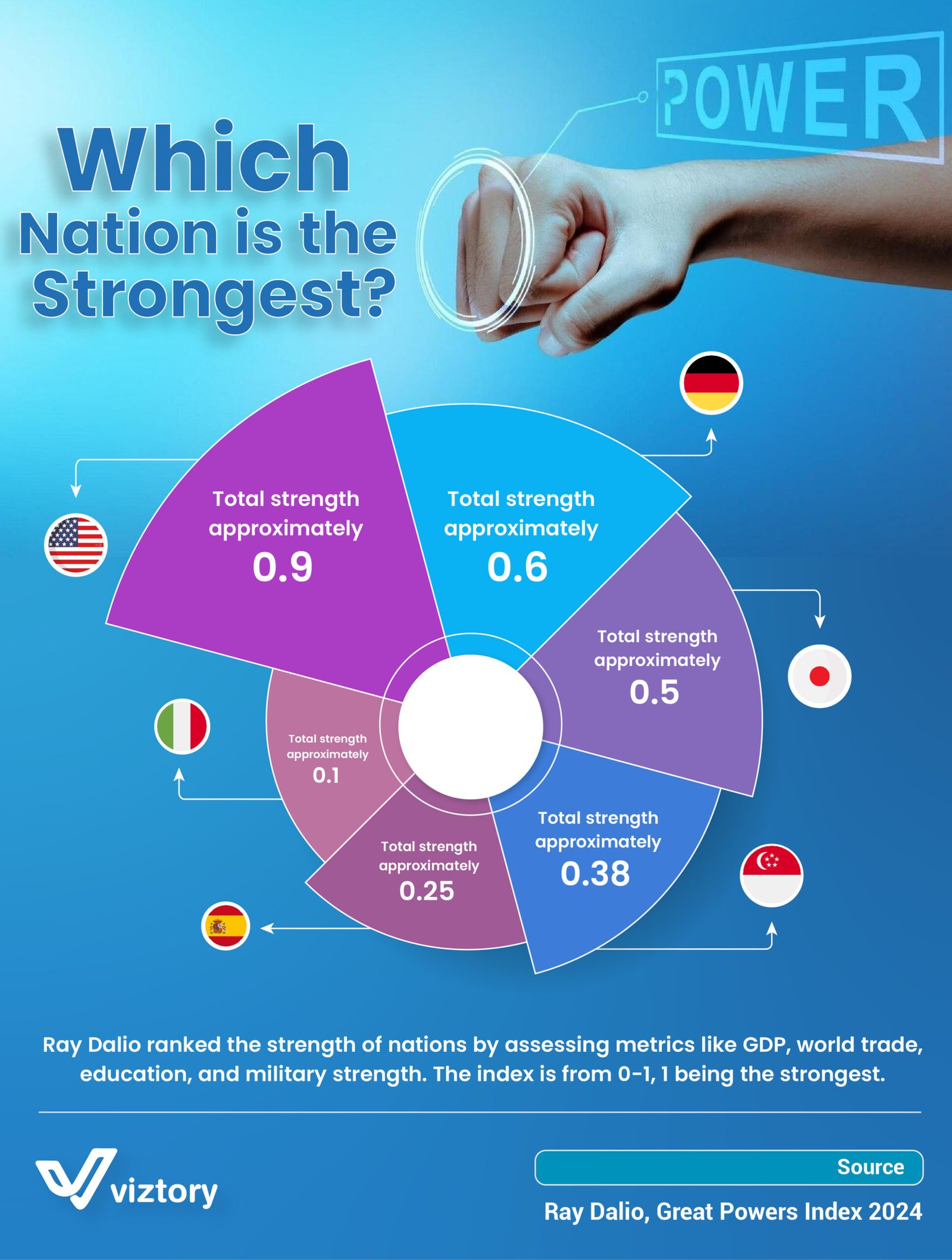Which Nation is the Strongest?
-
Oct, Fri, 2024
Which Nation is the Strongest? A Technological Perspective on National Power
The visualization ranks the strength of nations based on various metrics, including GDP, trade, education, and military power, with the United States at the top with a strength score of 0.9. Following the U.S. are Germany (0.6), Japan (0.5), and other nations, each showing varying levels of influence. As technology increasingly becomes a critical factor in global power, understanding these rankings through a technological lens provides valuable insights into how countries leverage their resources to enhance their global standing.
Technology as a Pillar of National Strength
Technology plays a central role in determining national strength. The U.S., with the highest strength score of 0.9, leads globally in technological innovation and development. American tech giants like Apple, Google, and Microsoft have a significant impact on the global tech landscape, driving advancements in AI, cloud computing, and digital infrastructure. This dominance in technology not only bolsters the U.S. economy but also reinforces its geopolitical influence, as technology becomes increasingly vital in military and economic strategies.
Germany and Japan: Industrial Powerhouses with Technological Prowess
Germany and Japan, with strength scores of 0.6 and 0.5, respectively, are renowned for their technological advancements in manufacturing, automotive industries, and robotics. Germany, for example, leads in industrial automation and engineering, making it a key player in the global tech market. Japan’s expertise in robotics and electronics has positioned it as a leader in consumer technology and innovation. Both nations leverage their technological strengths to maintain competitive advantages in global markets, enhancing their overall national power.
The Role of Emerging Technologies in National Competitiveness
As nations strive to enhance their global standing, emerging technologies such as artificial intelligence, biotechnology, and quantum computing have become critical areas of focus. For countries like Singapore (0.38) and Spain (0.25), investing in these technologies is essential for improving their rankings and strengthening their influence. Singapore, for example, has made significant strides in digital innovation, becoming a regional leader in fintech and smart city technologies. Such investments not only boost economic growth but also provide strategic advantages in international relations and trade.
Technology’s Impact on Education and Military Strength
Education and military capabilities are also essential components of national strength, and both are increasingly intertwined with technological advancements. Countries that invest in STEM education are better positioned to develop a skilled workforce capable of driving innovation. Moreover, advancements in defense technologies, such as cybersecurity and drone warfare, enhance military strength and provide strategic advantages. For instance, the U.S. and Japan continue to invest heavily in technology-driven military capabilities, reinforcing their positions as global superpowers.
Conclusion
The rankings illustrated in this visualization highlight how technology serves as a cornerstone of national power. As nations continue to invest in and prioritize technological development, their global influence and competitiveness are likely to be shaped by their ability to innovate and lead in emerging tech fields. By focusing on technology, countries can strengthen their economies, enhance national security, and ultimately secure a more prominent position on the world stage. As the digital age progresses, technology will remain a key determinant of which nations are the strongest and most influential.

